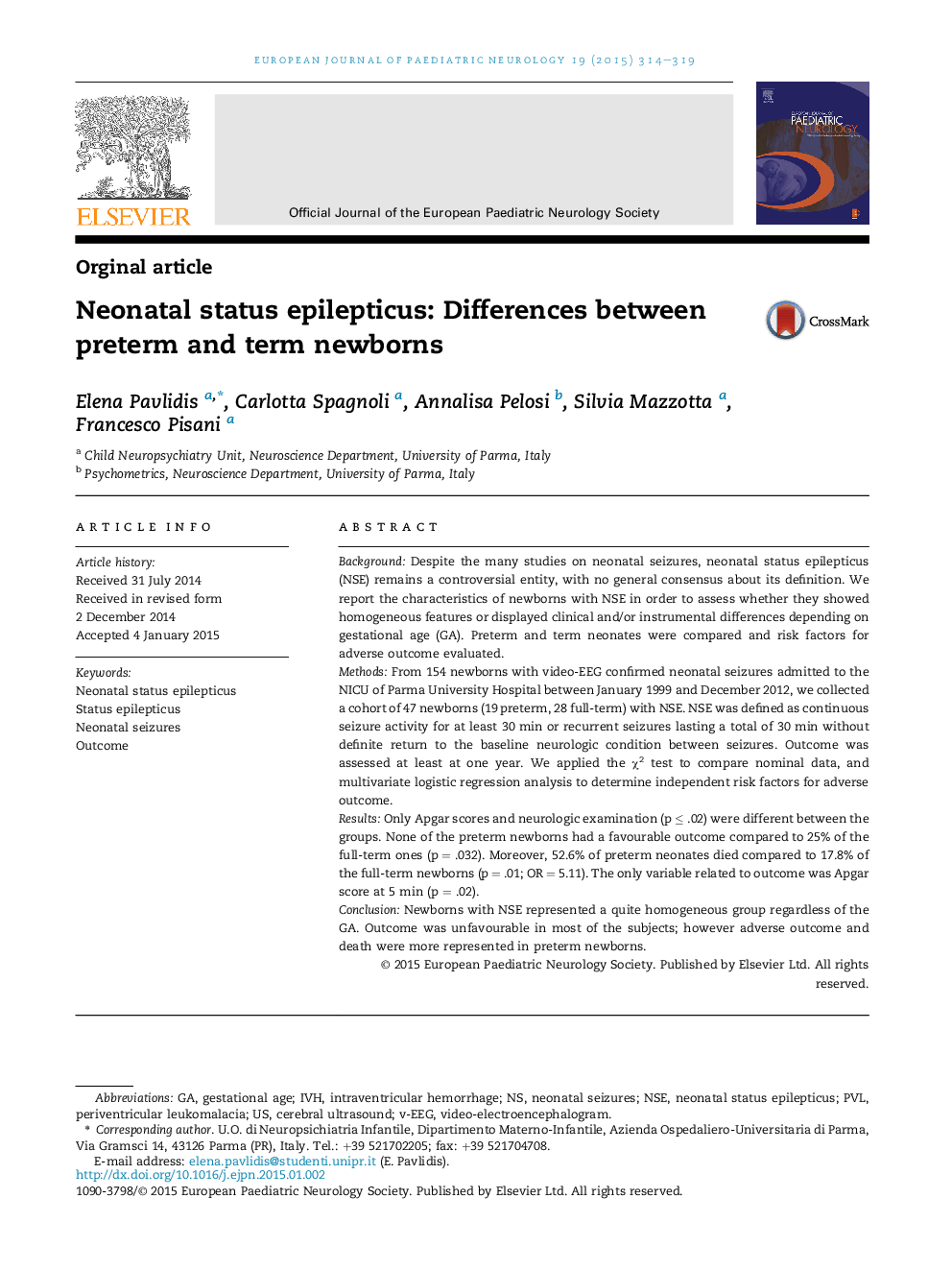| Article ID | Journal | Published Year | Pages | File Type |
|---|---|---|---|---|
| 3053708 | European Journal of Paediatric Neurology | 2015 | 6 Pages |
BackgroundDespite the many studies on neonatal seizures, neonatal status epilepticus (NSE) remains a controversial entity, with no general consensus about its definition. We report the characteristics of newborns with NSE in order to assess whether they showed homogeneous features or displayed clinical and/or instrumental differences depending on gestational age (GA). Preterm and term neonates were compared and risk factors for adverse outcome evaluated.MethodsFrom 154 newborns with video-EEG confirmed neonatal seizures admitted to the NICU of Parma University Hospital between January 1999 and December 2012, we collected a cohort of 47 newborns (19 preterm, 28 full-term) with NSE. NSE was defined as continuous seizure activity for at least 30 min or recurrent seizures lasting a total of 30 min without definite return to the baseline neurologic condition between seizures. Outcome was assessed at least at one year. We applied the χ2 test to compare nominal data, and multivariate logistic regression analysis to determine independent risk factors for adverse outcome.ResultsOnly Apgar scores and neurologic examination (p ≤ .02) were different between the groups. None of the preterm newborns had a favourable outcome compared to 25% of the full-term ones (p = .032). Moreover, 52.6% of preterm neonates died compared to 17.8% of the full-term newborns (p = .01; OR = 5.11). The only variable related to outcome was Apgar score at 5 min (p = .02).ConclusionNewborns with NSE represented a quite homogeneous group regardless of the GA. Outcome was unfavourable in most of the subjects; however adverse outcome and death were more represented in preterm newborns.
